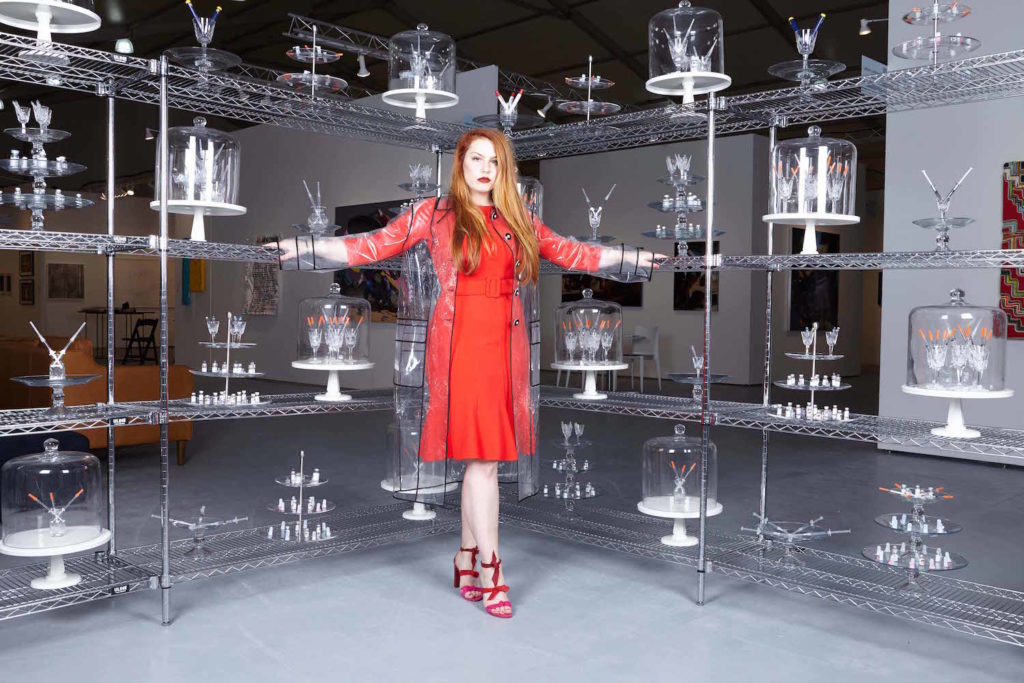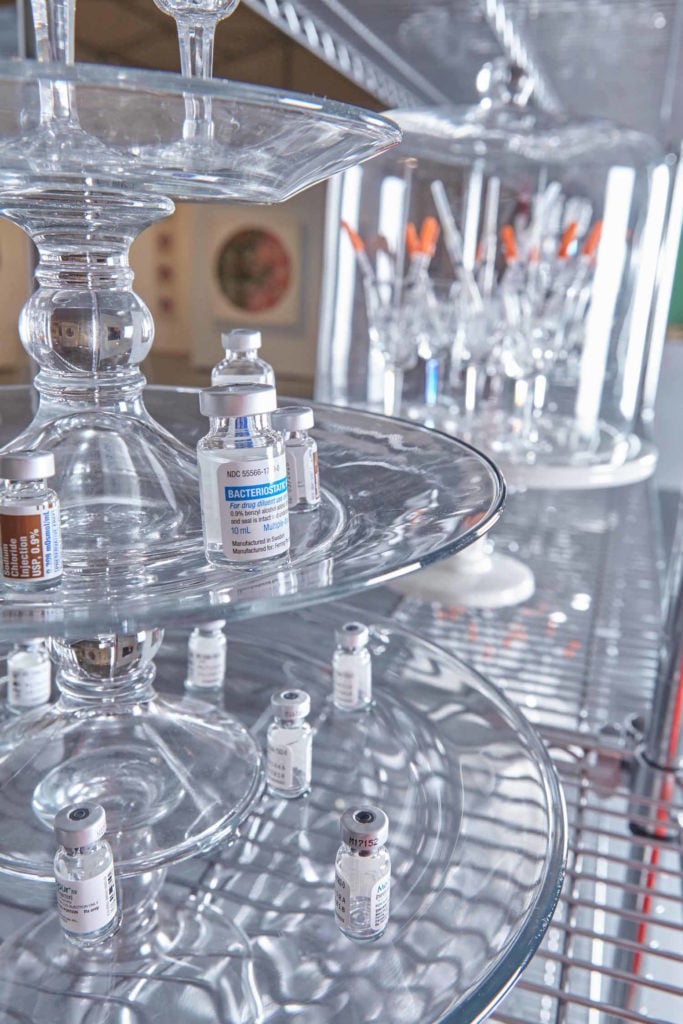Art Fairs
Pulse Miami Beach Is Looking Strong Under Its New Leadership
Highlights include an Instagram-perfect photo booth art project.

Highlights include an Instagram-perfect photo booth art project.

Sarah Cascone

“I don’t want to make changes to something that’s not broken,” Katelijne De Backer told artnet News the night before yesterday’s opening of Pulse Contemporary Art Fair. The art fair veteran, who helmed the Armory Show in New York from 1999 to 2011, is making her debut this year as the fair’s director.
The 12-year-old Miami fair thrived under the leadership of former director Helen Toomer, who is now running an artist residency program in Upstate New York. Indeed, Toomer is still very much a part of the Pulse family—she’s serving as curator of the booth for the National YoungArts Foundation.
Guests at yesterday’s preview, who turned out in almost double the numbers from 2016, according to organizers, didn’t find much in the way of surprises under the new leadership. The booth takes place in two tents on the beach; the north tent is dedicated to booths of three or more artists, generally more established ones, while the south tent features solo presentations, all nominated for the Pulse Prize—last year’s winner, Devan Shimoyama, is back with Los Angeles’s Samuel Freeman Gallery and is eligible to win the prize again—and dual-artist “Conversations,” as well as three nonprofits in the Points sector.
This year’s Pulse is a big change, however, for De Backer, who most recently led the offbeat hotel fair Aqua Art Miami, known for its street art vibe, and the more blue-chip Art New York. She feels Pulse fills an important niche among Art Basel in Miami Beach and its satellites. “If you go to the main fair, it’s so established that you know every artist,” she said. “It’s that sense of discovery you still really have at Pulse.”
“This fair brings me back a little bit to the early days of the Armory Show,” De Backer added. “Funnily enough, there are some galleries here that I worked with at the Armory, like Bryce Wolkowitz.”
The main difference, of course, is that art fairs have utterly transformed over the past two decades, transitioning from DIY trade shows to world-class exhibitions. “We just did it without knowing how to do it,” De Backer recalled. “It was very bohemian. Now, it’s so much more professional.”
Her early years in the art fair also predate the age of social media. It’s hard to imagine, for instance, an art fair photo booth 10 years ago, and yet there one is, in millennial pink, presented by Newark’s Project for Empty Space. Dubbed the Pussy Photo Booth, it gives guests the chance to pose with signs bearing feminist slogans like “Fuck You Pay Me,” which are sent straight to your phone, Instagram-ready. At the New Jersey gallery, an entire wall is dedicated to Polaroids from the ongoing participatory project.
If it seems like Instagram is taking over the art world, De Backer is taking it in stride. “I think the whole art fair has become a photo booth,” she joked. “It’s such a great opportunity to take photos!”
Another impressive backdrop surrounds the VIP lounge, where Fischer Cherry has created a large-scale installation inspired by her experiences with fertility treatments after recently being diagnosed with an autoimmune disease. Tall metal shelves, stacked with delicate Waterford crystal and dessert stands, surround the lounge.

Fischer Cherry, Fertility (2017). Installation view (detail) at Pulse Miami Beach. Photo courtesy of the artist.
The vessels are full of discarded fertility drugs the artist has collected from women across the country who are also struggling to conceive. Fischer started with her own set of Waterford glasses, inherited from her Irish grandmother, before purchasing additional sets on eBay.
The artist “wanted to make something beautiful” from an experience that brought great emotional upset, she told artnet News, noting that the expense of her treatments, not paid for by most insurance companies, has been so high that she has been forced to give up her studio. “It should be covered,” she said.
“Most people don’t really make money until their 40s or 50s, but you have to do this now,” she added, noting that many kinds of women seek fertility treatments, from LGBT couples to cancer patients about to undergo chemotherapy. “It’s not just my story,” she said. “It’s a very universal story… it’s bigger than just a feminist issue!”
Cherry’s is the kind of thoughtful, issue-driven work that punctuates Pulse, from Phoenix Lindsey-Hall’s Never Stop Dancing, a touching tribute to the victims of the Orlando nightclub shooting made of 49 porcelain disco balls, to Amy Hill’s contemporary update of Dutch and Flemish Renaissance oil painting, at New York’s Front Room Gallery.
For De Backer, the most important goal was creating something that would continue to satisfy Pulse’s existing collector base. “I wasn’t hired to rescue a fair,” she said.